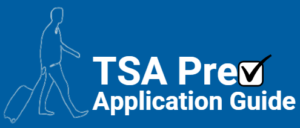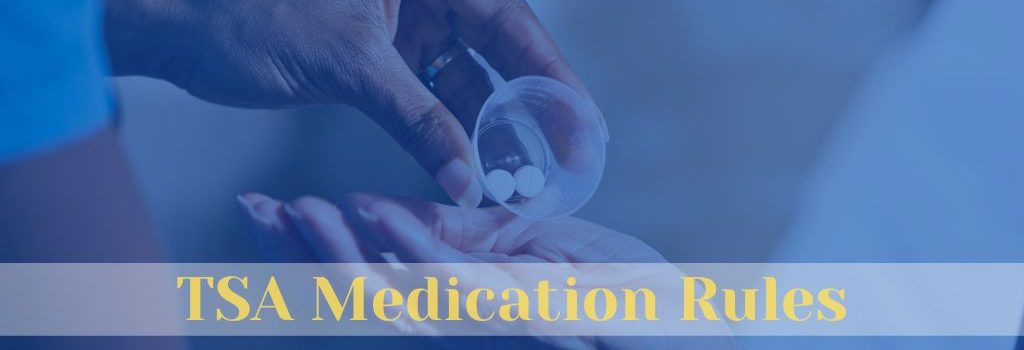TSA Medication Rules 2023
The Transportation Security Administration (TSA) is responsible for protecting the nation’s transportation systems from terrorist attacks. In order to do this, the TSA has implemented a number of security measures, including screening passengers and their belongings. One of the items that the TSA screens for is medication.
The TSA has a number of rules regarding medications. TSA medication rules are designed to ensure that medications are transported safely and that they do not pose a threat to security.
TSA Medication Rules for Carry-On Luggage
- Medications in pill or solid form can be brought in unlimited amounts as long as they are screened.
- Medications in liquid or gel form must be in 3.4 ounce (100 milliliter) or smaller containers. These containers must fit in a one-quart, clear, plastic, zip-top bag.
- Medications in powder form must be in 12 ounce (350 milliliter) or smaller containers. These containers must also fit in a one-quart, clear, plastic, zip-top bag.
- Medications that are essential for the health of the passenger, such as insulin or nitroglycerin, are exempt from the 3.4 ounce (100 milliliter) limit. However, passengers must still declare these medications to the TSA officer at the screening checkpoint.
TSA Medication Rules for Checked Luggage
- Medications in pill or solid form can be brought in unlimited amounts as long as they are packaged securely.
- Medications in liquid or gel form must be in 3.4 ounce (100 milliliter) or smaller containers. These containers do not need to fit in a one-quart, clear, plastic, zip-top bag.
- Medications in powder form must be in 12 ounce (350 milliliter) or smaller containers. These containers do not need to fit in a one-quart, clear, plastic, zip-top bag.
TSA Medication Rules for Medical Devices
- Medical devices, such as insulin pumps and syringes, are allowed on board aircraft. However, passengers must declare these devices to the TSA officer at the screening checkpoint.
- Medical devices that contain batteries may be subject to additional screening.
- Passengers may be asked to demonstrate how to use their medical device.
TSA Medication Rules for Traveling Internationally
When traveling internationally, passengers should check with the TSA and the customs and border protection agency of the country they are visiting to ensure that their medications are allowed into the country. Some countries have restrictions on the importation of certain medications. Passengers should also be aware of the time difference between the United States and the country they are visiting. If they need to take medication at a specific time, they should plan accordingly.
Here are some additional tips for traveling internationally with medications:
- Keep your medications in their original containers. This will help the customs and border protection agency officer to identify your medications and to understand how much medication you are carrying.
- Bring a copy of your prescription(s) with you. This will also help the customs and border protection agency officer to identify your medications and to understand how much medication you are carrying.
- If you are traveling with liquid or gel medications, pack them in a one-quart, clear, plastic, zip-top bag. This will make it easier for the customs and border protection agency officer to screen your medications.
- If you are traveling with powder medications, pack them in 12 ounce (350 milliliter) or smaller containers. This will also make it easier for the customs and border protection agency officer to screen your medications.
- If you are traveling with medical devices, declare them to the customs and border protection agency officer at the point of entry.
- Be prepared to demonstrate how to use your medical device.
- Passengers traveling internationally should check with the TSA and the customs and border protection agency of the country they are visiting to ensure that their medications are allowed into the country.
- Some countries have restrictions on the importation of certain medications.
- Passengers should also be aware of the time difference between the United States and the country they are visiting. If they need to take medication at a specific time, they should plan accordingly.
Tips for Traveling with Medications
- Keep your medications in their original containers. This will help the TSA officer to identify your medications and to understand how much medication you are carrying.
- Bring a copy of your prescription(s) with you. This will also help the TSA officer to identify your medications and to understand how much medication you are carrying.
- If you are traveling with liquid or gel medications, pack them in a one-quart, clear, plastic, zip-top bag. This will make it easier for the TSA officer to screen your medications.
- If you are traveling with powder medications, pack them in 12 ounce (350 milliliter) or smaller containers. This will also make it easier for the TSA officer to screen your medications.
- If you are traveling with medical devices, declare them to the TSA officer at the screening checkpoint.
- Be prepared to demonstrate how to use your medical device.
- If you are traveling internationally, check with the TSA and the customs and border protection agency of the country you are visiting to ensure that your medications are allowed into the country.
Common Medications that are Allowed on Board Aircraft
- Over-the-counter medications, such as ibuprofen and acetaminophen
- Prescription medications, such as insulin and nitroglycerin
- Medical devices, such as insulin pumps and syringes
- Medications that are essential for the health of the passenger, such as medication for allergies or asthma
Common Medications that are not Allowed on Board Aircraft
- Illegal drugs, such as marijuana and cocaine
- Narcotics, such as morphine and oxycodone
- Controlled substances, such as amphetamines and barbiturates
- Medications that are injectable, such as insulin and epinephrine
- Medications that are flammable, such as alcohol and rubbing alcohol
If you are unsure whether or not your medication is allowed on board aircraft, you should check with the TSA. You can do this by visiting the TSA website or by calling the TSA helpline at 1-866-289-9673.
TSA Medication Rules for Specific Medications
- Insulin: Insulin is allowed on board aircraft. Passengers may bring their insulin in carry-on or checked luggage. Insulin in carry-on luggage must be in 3.4 ounce (100 milliliter) or smaller containers. Insulin in checked luggage can be in any size container. Passengers must declare all insulin to the TSA officer at the screening checkpoint.
- Epipens: Epipens and other epinephrine auto-injectors are allowed on board aircraft. Passengers may bring their Epipens in carry-on or checked luggage. Epipens in carry-on luggage must be in 3.4 ounce (100 milliliter) or smaller containers. Epipens in checked luggage can be in any size container. Passengers must declare all Epipens to the TSA officer at the screening checkpoint.
- Other injectable medications: In general, injectable medications are not allowed on board aircraft. However, there are some exceptions, such as insulin and epinephrine auto-injectors. Passengers who need to travel with other injectable medications should contact the TSA for more information.
- Liquid medications: Liquid medications are allowed on board aircraft, but they must be in 3.4 ounce (100 milliliter) or smaller containers. These containers must fit in a one-quart, clear, plastic, zip-top bag. Passengers who need to travel with liquid medications that are more than 3.4 ounces (100 milliliters) should contact the TSA for more information.
- Powder medications: Powder medications are allowed on board aircraft, but they must be in 12 ounce (350 milliliter) or smaller containers. Passengers who need to travel with powder medications that are more than 12 ounces (350 milliliters) should contact the TSA for more information.
TSA Medication Rules for Families with Young Children
Traveling with a young child can be challenging enough without having to worry about TSA medication rules. However, there are a few things that parents can do to make the process easier.
First, it is important to be aware of the TSA’s rules for liquid medications. Liquid medications are allowed in carry-on luggage, but they must be in 3.4 ounce (100 milliliter) or smaller containers. These containers must fit in a one-quart, clear, plastic, zip-top bag. Parents should pack their child’s liquid medications in this bag so that they can be easily screened by the TSA.
Second, parents should bring a copy of their child’s prescription(s) with them. This will help the TSA officer to identify the medications and to understand how much medication the child is carrying.
Third, parents should be prepared to provide information about their child’s medical condition. This may include information about why the child needs the medication and how often the child takes it.
Finally, parents should be patient and understanding. The TSA officers are doing their jobs to keep the public safe.
TSA Medication Rules for Passengers with Chronic Illnesses
Passengers with chronic illnesses, such as diabetes or asthma, may need to travel with medications that are not typically allowed on board aircraft. For example, passengers with diabetes may need to travel with insulin and syringes, and passengers with asthma may need to travel with inhalers.
Passengers with chronic illnesses should contact the TSA before they travel to discuss their medication needs. The TSA may be able to make special arrangements for these passengers.
For example, passengers with diabetes may be able to bring their insulin and syringes on board aircraft in a larger container than the 3.4 ounce (100 milliliter) limit. Passengers with asthma may be able to bring their inhalers on board aircraft even if they are flammable.
TSA Medication Rules for Passengers with Disabilities
Passengers with disabilities may need to travel with medications that are not typically allowed on board aircraft. For example, passengers with disabilities may need to travel with injectable medications or with medications that contain controlled substances.
Passengers with disabilities should contact the TSA before they travel to discuss their medication needs. The TSA may be able to make special arrangements for these passengers.
For example, passengers with disabilities may be able to bring their injectable medications on board aircraft in a larger container than the 3.4 ounce (100 milliliter) limit. Passengers with disabilities may also be able to bring their medications that contain controlled substances on board aircraft if they have a valid prescription.
Conclusion:
The TSA has a number of rules regarding medications. These rules are designed to ensure that medications are transported safely and that they do not pose a threat to security. Passengers who are traveling with medications should be aware of the TSA’s medication rules and should plan accordingly.

